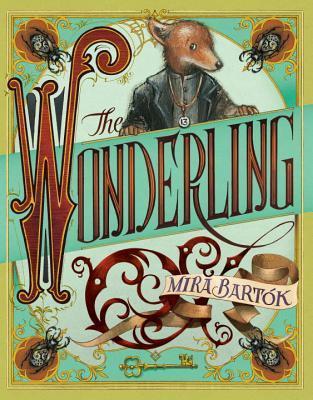 |
| Click to view on Goodreads |
Welcome to the Home for Wayward and Misbegotten Creatures, an institution run by evil Miss Carbunkle, a cunning villainess who believes her terrified young charges exist only to serve and suffer. Part animal and part human, the groundlings toil in classroom and factory, forbidden to enjoy anything regular children have, most particularly singing and music. For the Wonderling, an innocent-hearted, one-eared, fox-like eleven-year-old with only a number rather than a proper name -- a 13 etched on a medallion around his neck -- it is the only home he has ever known.
But unexpected courage leads him to acquire the loyalty of a young bird groundling named Trinket, who gives the Home's loneliest inhabitant two incredible gifts: a real name -- Arthur, like the good king in the old stories -- and a best friend. Using Trinket's ingenious invention, the pair escape over the wall and embark on an adventure that will take them out into the wider world and ultimately down the path of sweet Arthur's true destiny.
Richly imagined, with shimmering language, steampunk motifs, and gripping, magical plot twists, this high adventure fantasy is the debut novel of award-winning memoirist Mira Bartok and has already been put into development for a major motion picture.
(450 pages)
This is the second book I've read in a row featuring anthropomorphic animals and talking mice, after Kristin Kladstrup's The Nutcracker Mice (the review of which, due to a fluke of scheduling, won't be up for another month). Besides those initial similarities, though, the two books don't really have much in common. Where The Nutcracker Mice is about ballet-dancing mice living in the Mariinsky Theater in 1892, The Wonderling features a semi-historical world in which there are humans, normal animals whose complex languages are indecipherable to all but our protagonist Arther, and the creatures like Arthur himself called "groundlings." These groundlings are mixtures between humans and animals, or two to three different animals, and they are treated like absolute scum by the humans they live alongside.
The book reminds me a little bit of the Redwall series, actually. It's got the whole "setting out from a walled-in building on a quest" thing and everything, though Arthur is escaping his oppressive orphanage rather than setting out to protect his abbey. And the plot of The Wonderling is definitely more original than the recycled plot that made up the backbone of every single book in the series. It's darker than Redwall, too. Maybe the fact that it's more similar to real European history makes it feel more serious.
Honestly, it's hard to pin down The Wonderling. It's a very beautiful book, with its elaborate world building and detailed descriptions of characters are extremely diverse both physically (the groundlings are fascinating!) and emotionally. And that simple description doesn't even include the fascinating implications of the socioeconomic differences between the groundlings and the humans.
I suppose I'm going too deep into this children's book, though. From a pure entertainment standpoint, I should mention that I didn't like the book quite as much as I'd hoped. I loved the premise and most of the execution, yes, but I didn't like everything that happened/was revealed in the conclusion. It was still a very interesting and exciting read, though, so I do recommend it. If you do decide to read The Wonderling, let us know in the comments sections what you think!
Disclaimer: I received a complimentary copy of this novel from the publisher in exchange for an honest review.
No comments:
Post a Comment
Join the conversation!